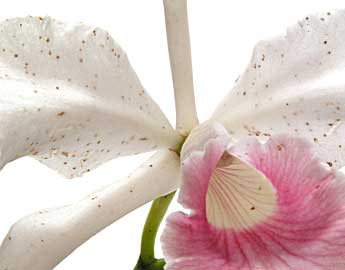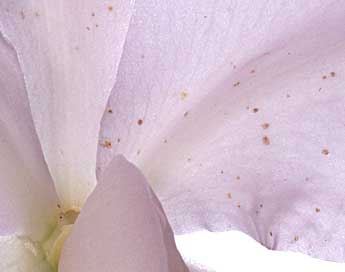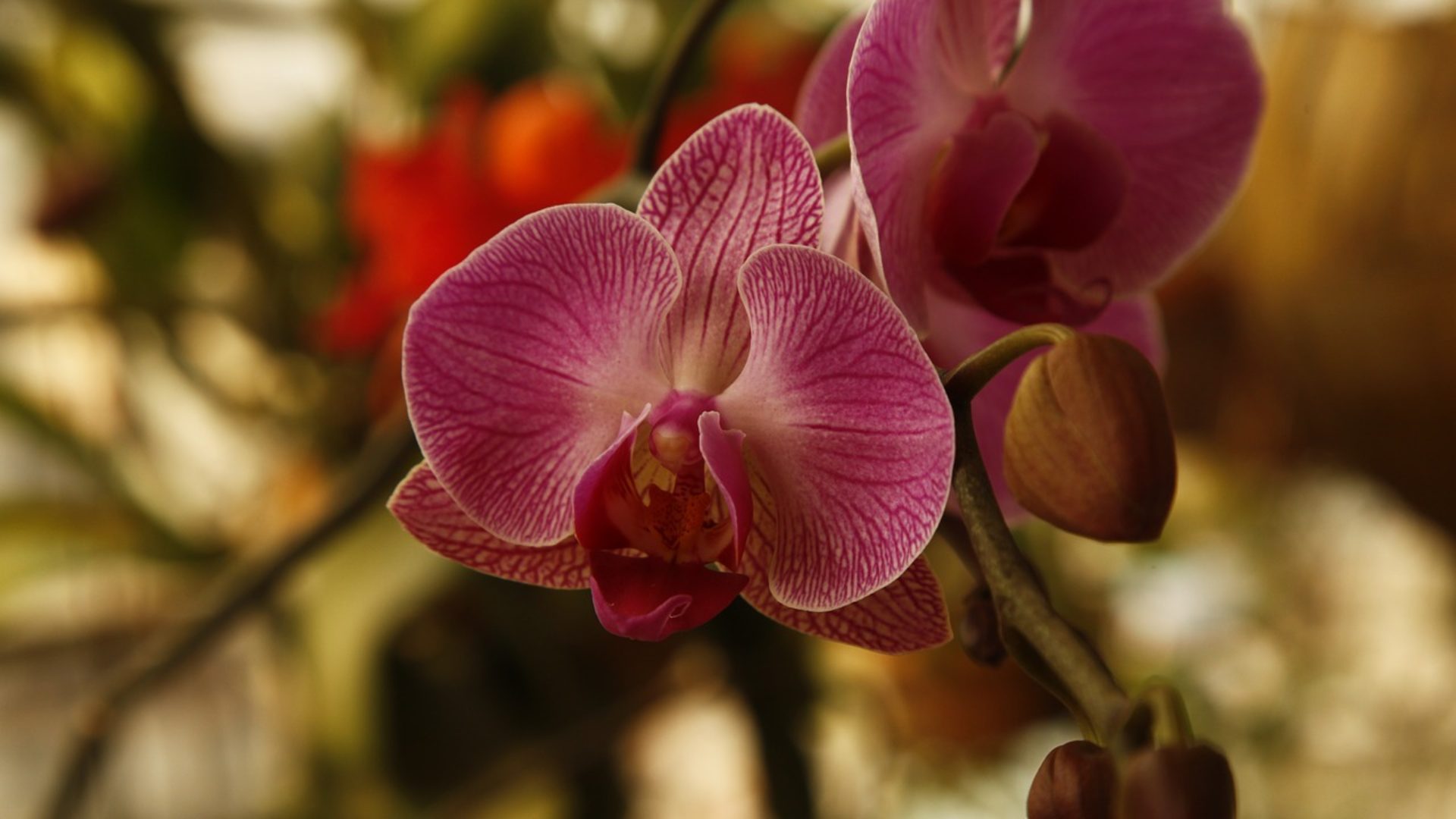Take Precautions To Prevent This Fungus from endangering Winter Flowers
A fungal disease affecting many different types of herbaceous and woody plants, botrytis strikes during cool, damp weather in areas where bad air circulation exists. On orchids, the disease, caused by Botrytis cinerea, causes unpleasant brown spotting of blooms. The fungus most often affects Phalaenopsis and Cattleyas, but may be found in a wide range of orchid genera. Older orchids are highly susceptible to infection.

Life Cycle
The fungus winters primarily on dead and dying plant material, and starts producing and spreading spores during cool, damp weather in the spring or autumn. In damp conditions, rapidly increasing humidity or disturbing infected plants may flow out spores into the surrounding growing area. Spores can be spreaded by wind, rain or any mechanical action. Temperatures in the mid 60’s to low 70’s F (18–23 C), and wet plant surfaces or ambient humidity of at least 92 percent, are ideal conditions. The fungus is able to spread and grow quite quickly, and it will infect the healthy plant tissue as quickly as 14 hours.
Symptoms
Botrytis shows as small, brown necrotic spots on orchid flowers. Those spots may increase in size and number when the infection progresses, and may be surrounded by a light pink margin. In very serious infections, the spots can coalesce, and gray, webbed fungal growth (mycelium) may be visible.
Prevention
The best way of botrytis control is prevention, which includes sanitation, air circulation and careful watering.

Sanitation
Examine the growing area carefully for conditions favorable to botrytis. Because this pathogen thrives and winters over on dead and dying plant material, take away any plant debris, spent or fallen flowers and leaves from the growing area to lessen the possibility of spreading the fungus. Some growers advise removing and disposing of all the affected flowers to help prevent the spread of the fungus, and even burning or burying of the affected plant tissue.
Circulation
Keep a large quantity of fresh air moving through the growing area and around the plants at all times. A stagnant, damp environment with inadequate air circulation encourage the development or growth of botrytis. Good air circulation is a necessity to prevent fungal infections year round, but most especially when plants are in full bloom. Increasing the ambient temperature and air movement and decreasing the humidity during cool, slightly wet weather will help get rid of any excess moisture on plant tissue, thus minimizing the possibility of infection. In most areas, orchids grown outdoors already have the necessary air movement in their environment.
Watering
When pouring water, avoid wetting the plant and its flowers, if possible. Water that remains on petals or leaves after a rain or pouring water encourages fungal development or growth. Pouring water early in the day helps make sure that the plant and its flowers will be dry by nightfall. Never allow blooms or leaves to stay wet overnight.
Companion plants may introduce a variety of pests and diseases that also affect orchids, including botrytis. Examine any companion plants carefully in the growing area for indications of the fungus. Some plants are susceptible to botrytis including African violets, amaryllis, Amazon lily, azaleas, begonias, cacti, caladium, calla lily, camellias, castor beans, chrysanthemums, cinerarias, coleus, cornflowers, dahlias, passion flower, dracaenas, heliotrope, fuchsias, dusty millers, ferns, fig, gardenias, gloxinias and poinsettias.
Finally, separate any new plants for a minimum of two weeks before admitting them to your growing area and into your orchid set. During the separation period, keep a close eye on the new acquisition for indications of any pest or disease that could be spread to other plants.
Control
Once the botrytis spotting appears, there is no way to remove it — only preventing future occurrences. A fungicide such as thiphanate methyl, iprodione, vinclozolin or Physan can be used as needed to stop further outbreaks. Because the infection mainly affects flower petals, many growers do not advise the use of fungicides. As with any chemical, always use it in strict compliance with the manufacturer’s instructions.


One thought on “Orchid Ailment – Botrytis”
Write more, thats all I have to say. Literally, it seems as though you relied on the post to make your point. You clearly know what youre talking about, why throw away your intelligence on just posting videos to your site when you could be giving us something enlightening to read?